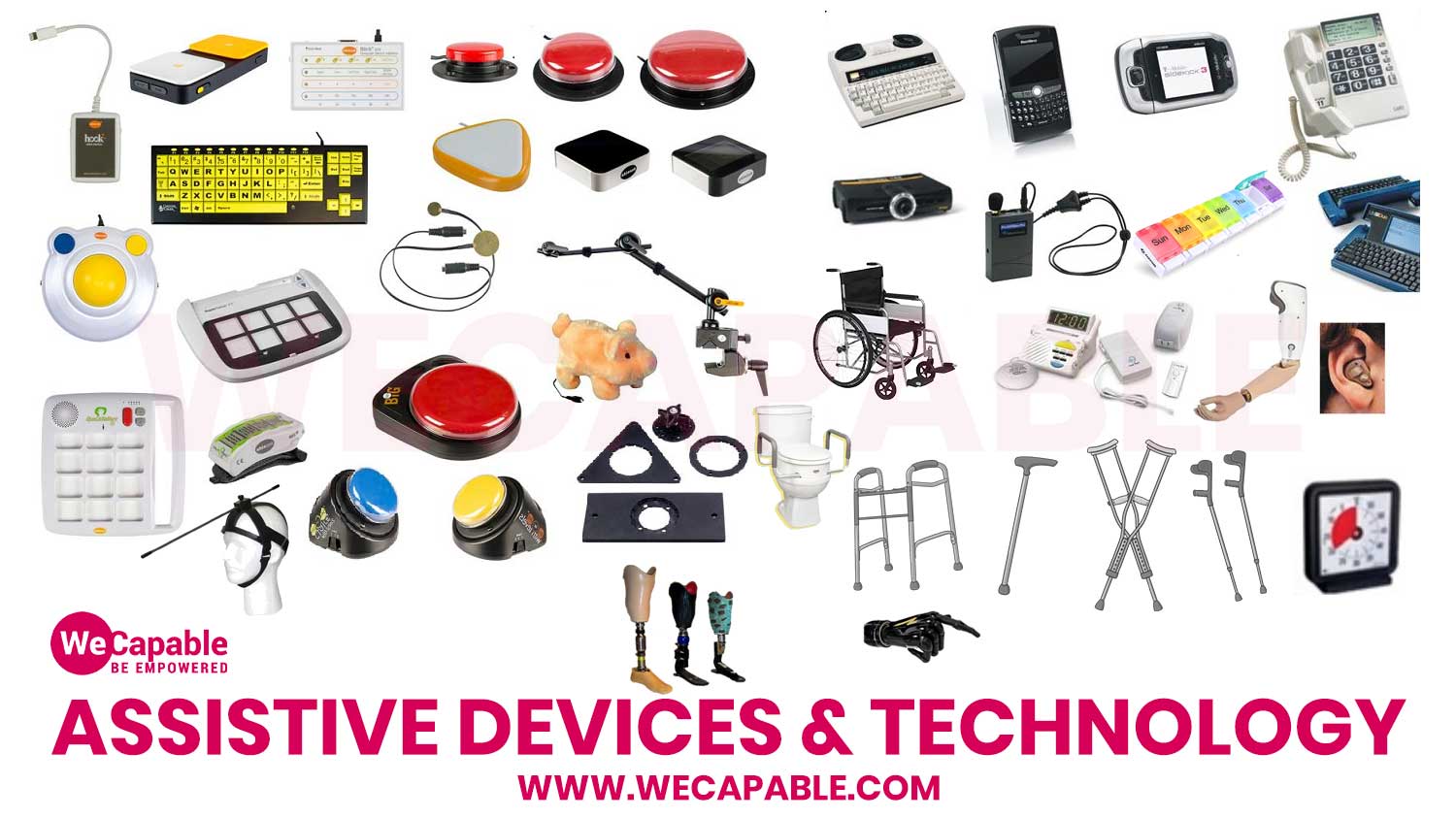Living a healthy, productive, independent and dignified life is a basic human right for all. Some physical limitations caused due to a disability, non-communicable diseases, or advanced age can make it difficult for some people to enjoy that basic human right of living a healthy, productive, independent, and dignified life. Assistive Technology is an umbrella term for assistive, adaptive, and rehabilitative devices that help such people to get over or minimize the disabling impact of their physical limitations. In this write-up, we are discussing major aspects like meaning and importance of assistive technology, and some common examples of assistive technology.
What is Assistive Technology?
Assistive Technology includes assistive, adaptive, and rehabilitative devices and services that help maintain or improve an individual’s functioning and independence. These devices and services are used by individuals to perform tasks that they might not be able to do otherwise. Assistive technology enables people to live healthy, productive, independent, and dignified life and to productively participate in social life. Wheelchair, prostheses, hearing aids, spectacles, screen-readers, pill organizers, and memory aids are all examples of assistive technologies.
Importance of Assistive Technology
While it may be a thing of common sense for many of us, a lot of us might need some deeper discussion to understand the importance of assistive technologies.
Assistive technology can completely transform someone’s life for the better. It reduces the need for formal health supports, long-term care, and the work of caregivers. A person who needs assistive technology for her activities of daily living is compelled to live an excluded and isolated life in absence of that assistive technology. As a result, they cannot contribute productively to society and are pushed into the rut of poverty, disease, and further disabilities. This is bad not only for the person but for their family and society as a whole.
Assistive devices make nearby environment more accessible for people with disabilities or disabling conditions. Thus, these devices not only instill confidence in people, but also allow them to live independently and contribute to the society.
Who Needs Assistive Devices?
When we hear the word assistive devices, the first thing that comes to mind is persons with disabilities. But, persons with disabilities are not the only ones to get benefited from assistive devices. There are other categories of people who may need assistive devices. For example, a pregnant woman may need some assistive devices like picking and grabbing tools temporarily. People who may be recovering from some accident might need assistive devices during their period of recovery.
The most common categories of people who need assistive devices include:
- Persons with physical disabilities
- Old aged people
- People with certain disabling non-communicable diseases (e.g. diabetes and stroke)
- People with mental health issues (e.g. dementia and autism)
- People recovering from an accident or a disabling illness
- Pregnant women during their pregnancy
- People who are gradually losing their physical or mental capabilities
Examples of Assistive Technology
There are hundreds and thousands of assistive devices to help people live dignified and productive life. So, it is not possible to list down every single assistive device or technology. Let us see some of the common examples of assistive technology grouped according to the people who get the most benefit.
Mobility Impairment
Mobility impairment means a disability that affects a person’s movement and motor skills. Some common assistive devices to help with mobility impairment includes:
- Wheelchairs
- Walkers
- Crutches
- Prostheses
- Canes
- Mouth Sticks
- Head Wands
Visual Impairment
Visual impairment includes disabilities that affect a person’s eyesight. It includes persons with low-vision as well as blind people. Some common assistive devices that make life easier for persons with visual impairment includes:
- Spectacles
- Blind Canes
- Service Dogs
- Screen readers
- Magnifiers
- Text-to-Speech software
- Refreshable Braille Display
- Audiobooks
Hearing Impairment
Hearing Impairment includes diseases and disabilities that affect a person’s hearing power. Some common assistive technologies meant for persons with hearing impairment include:
- Assistive listening devices like a hearing loop or cochlear implant
- Speech to text synthesizing software
- Hearing dog
- Alerting devices that produce loud sound or blinking light
Mental Disease or Disabilities
This is a broad term that includes varieties of impairments related to a person’s memory and cognition etc. Some of the assistive technologies in this category can be as follows:
- Stress Balls
- Worry Beads
- Pill Organizer
- Sound blocking headphones
Final Thoughts
Assistive technology is a very wide term and the main focus is to help an individual live a more productive and independent life. There are so many assistive technologies around us that it is quite possible to see them just as a normal daily use thing without realizing their true purpose. We cannot list all assistive technology in one article here but we hope the concept was clear to you.
Use the citation below to add this article to your bibliography
"Assistive Technology: Meaning and Examples." Wecapable.com. Web. June 17, 2025. <https://wecapable.com/assistive-technology-meaning-examples/>
Wecapable.com, "Assistive Technology: Meaning and Examples." Accessed June 17, 2025. https://wecapable.com/assistive-technology-meaning-examples/
"Assistive Technology: Meaning and Examples." (n.d.). Wecapable.com. Retrieved June 17, 2025 from https://wecapable.com/assistive-technology-meaning-examples/


Leave a Reply